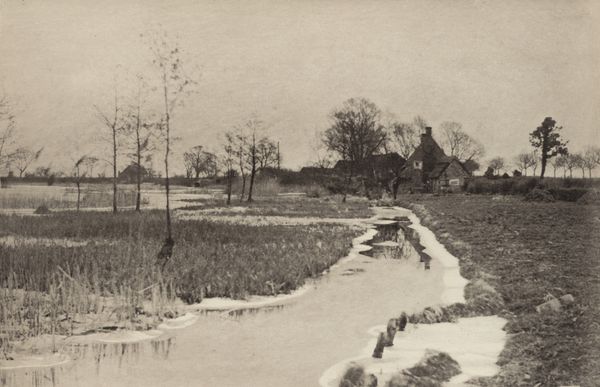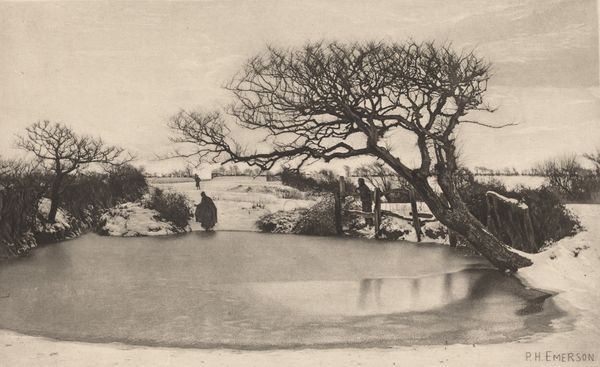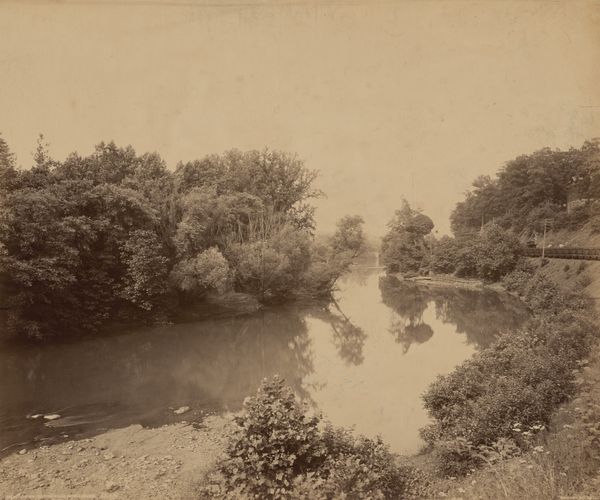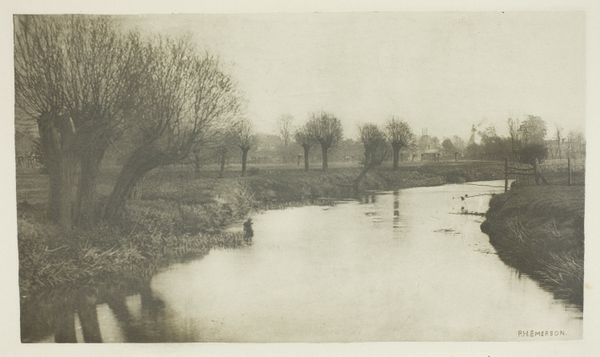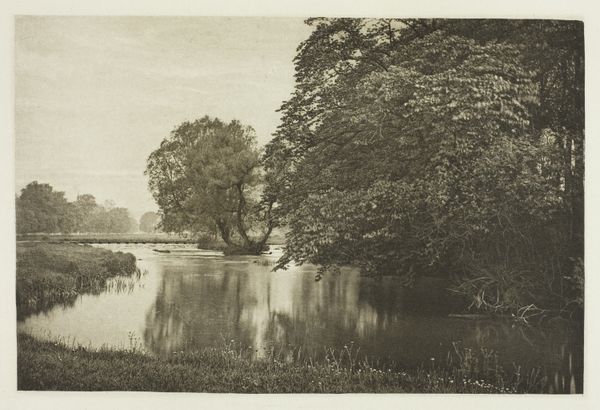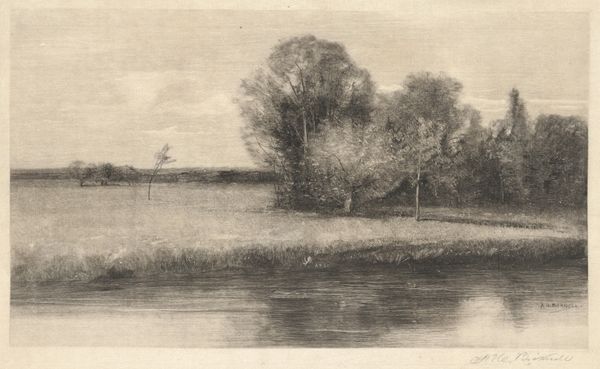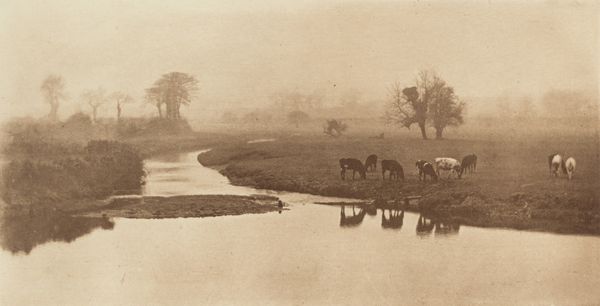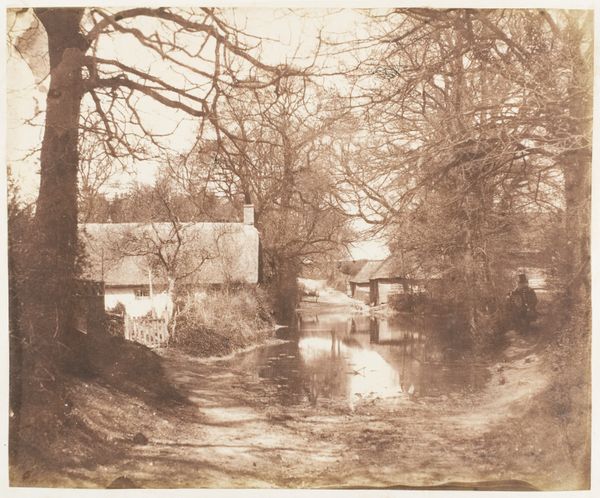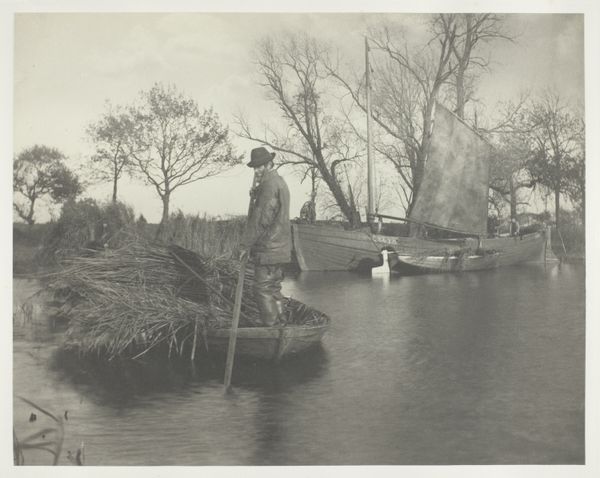
Dimensions: image: 14 × 22.5 cm (5 1/2 × 8 7/8 in.)
Copyright: National Gallery of Art: CC0 1.0
Curator: Here we have Peter Henry Emerson’s gelatin silver print, “The Village by the River,” likely created between 1890 and 1893. What are your initial thoughts? Editor: The overriding impression is one of stillness, of calm. The horizontal composition, the muted tonality... it all contributes to this rather meditative atmosphere. And those reflections on the water are so delicately rendered. Curator: Emerson was a leading figure in the Pictorialist movement, and this photograph really showcases that aesthetic. He advocated for photography as a fine art, not just a means of documentation. Editor: Precisely! Look at the way he manipulates light and shadow, creating a soft focus effect that resembles Impressionist paintings. It's not about capturing every detail with clinical precision, but about evoking a feeling. The lack of sharp focus gives a real poetic quality to the image. Curator: Absolutely, and it’s important to understand Emerson’s theories when looking at this piece. He believed in "selective focus," mimicking human vision by having only a specific area in sharp focus while the rest is softer. It also invites reflection on how rural life was perceived and idealized during this time. Editor: A beautiful example of this technique can be observed by noting that the foreground is softly blurred as a contrast to the detail captured within the trees; they are wonderfully articulated in comparison. I like the textural contrast, but are we glorifying poverty, presenting it under the guise of pictorial beauty? Curator: That's a crucial point. The image romanticizes rural life, presenting a vision of idyllic simplicity at a time when rural communities faced many hardships, which makes Emerson's choice of focusing on aesthetics ethically complicated. The formal beauty is undeniable, but it exists alongside real social issues. Editor: So it becomes about questioning, perhaps. The way that the art’s construction invites that reflection seems powerful in and of itself. Curator: Exactly. The print compels us to consider not only its inherent beauty but also the socio-political context in which it was produced. Editor: It does so while drawing your attention towards form; I shall be pondering this apparent conflict long after this discussion. Thank you.
Comments
No comments
Be the first to comment and join the conversation on the ultimate creative platform.
